#Canon rangefinder Camera
Explore tagged Tumblr posts
Text
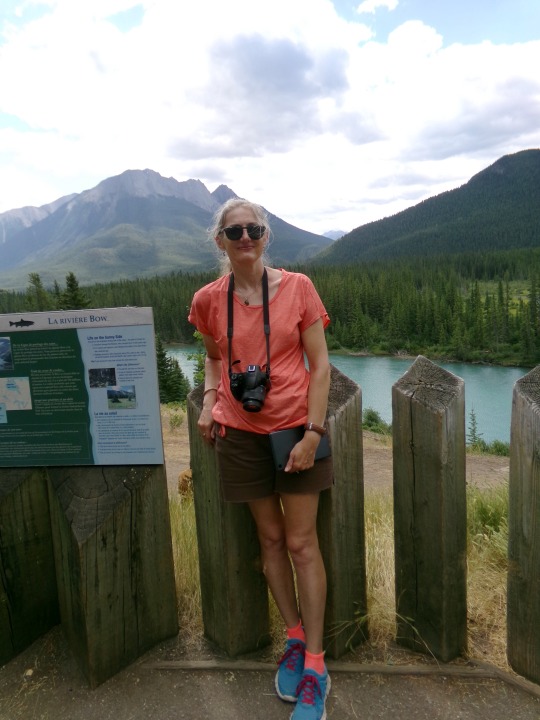


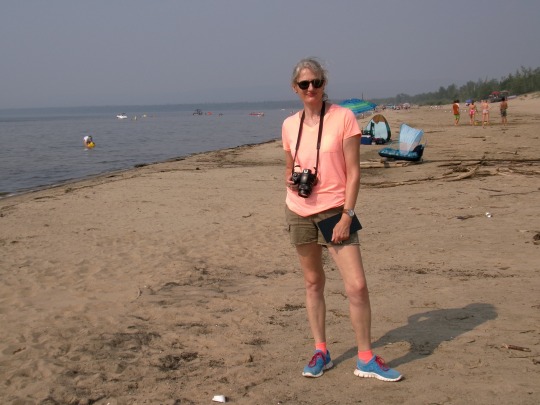
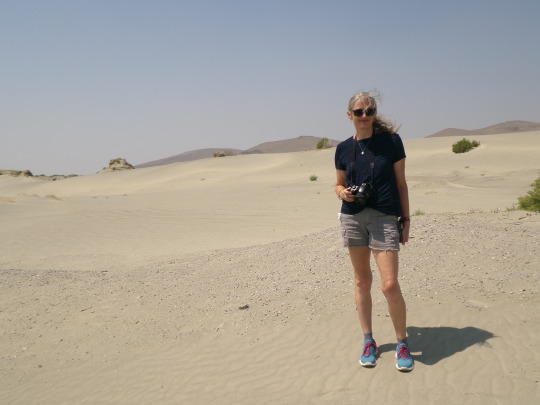
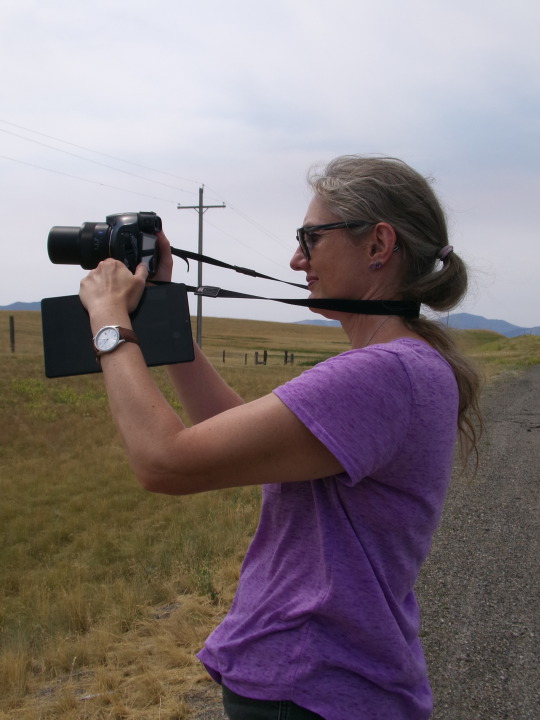

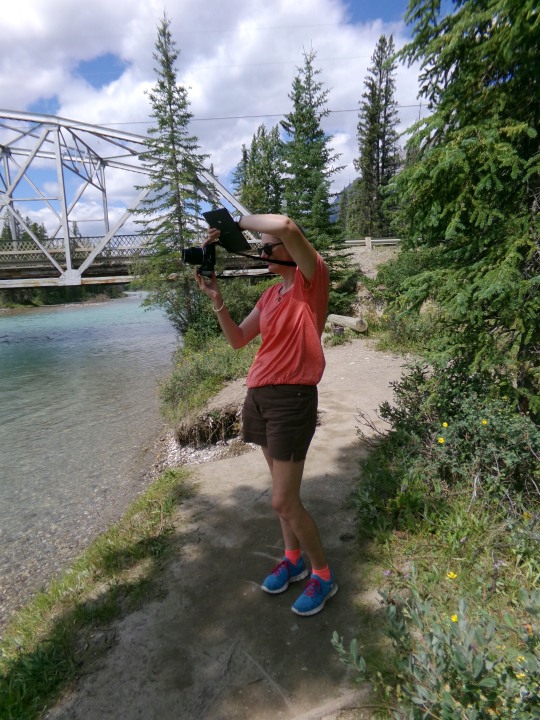




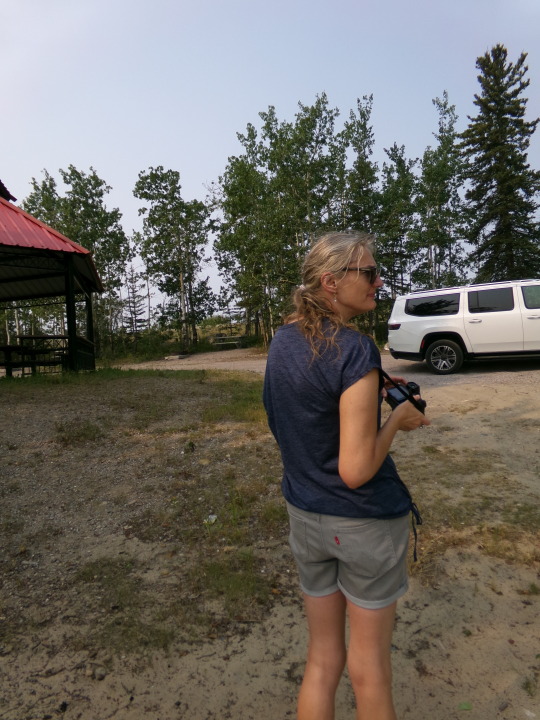
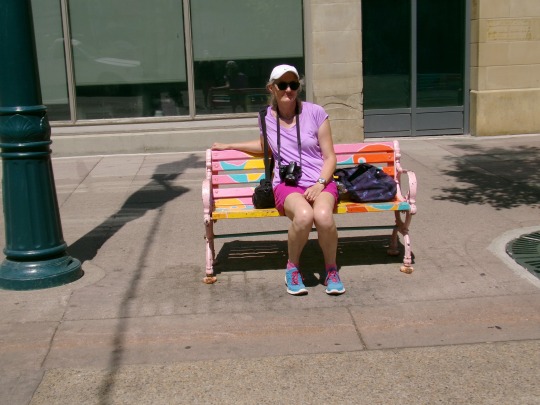
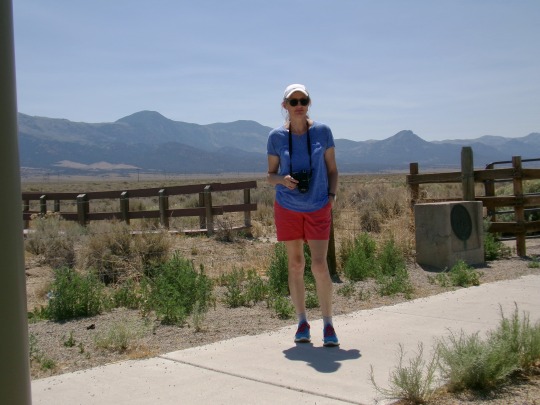
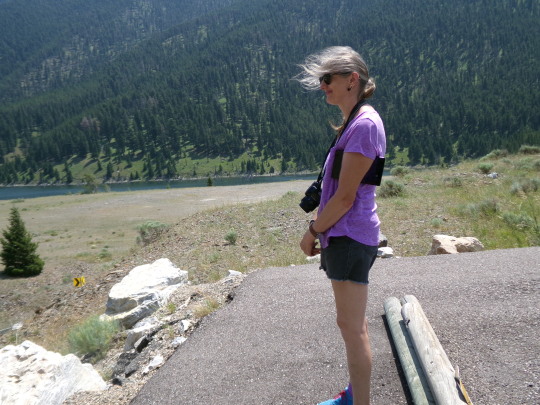
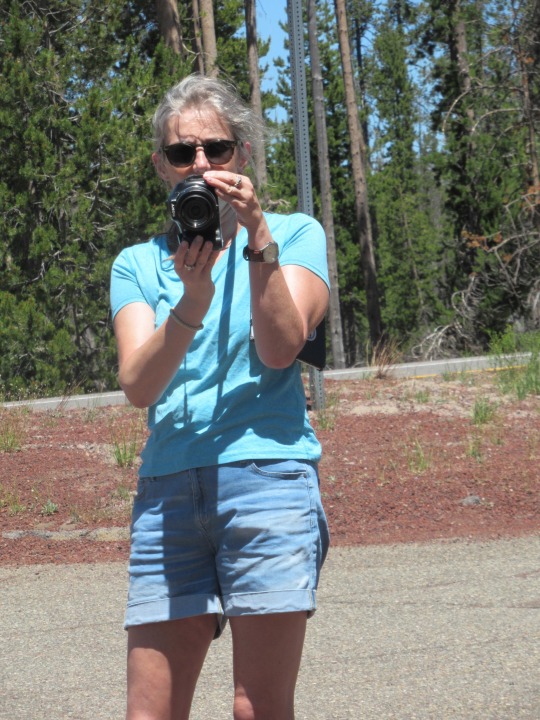
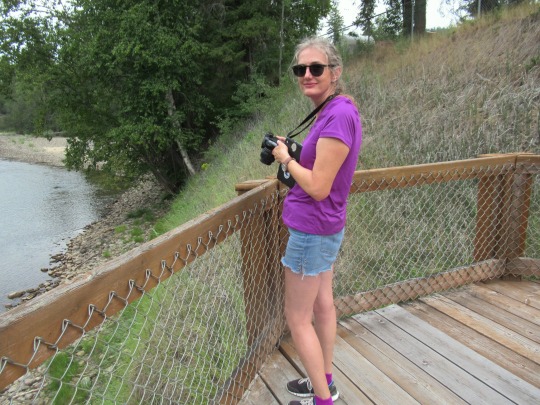
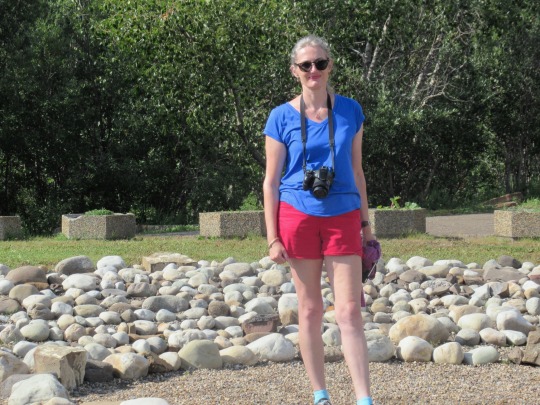

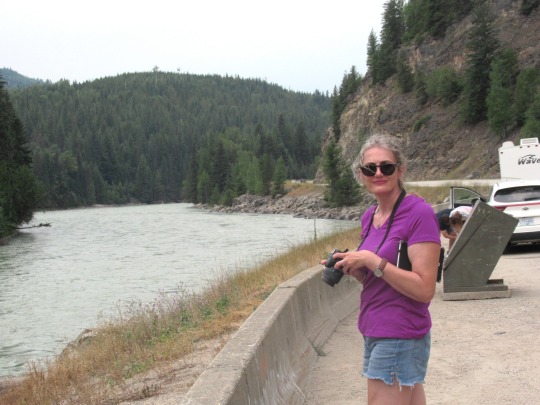
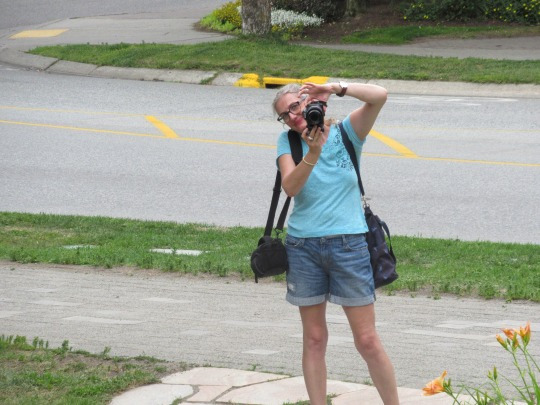
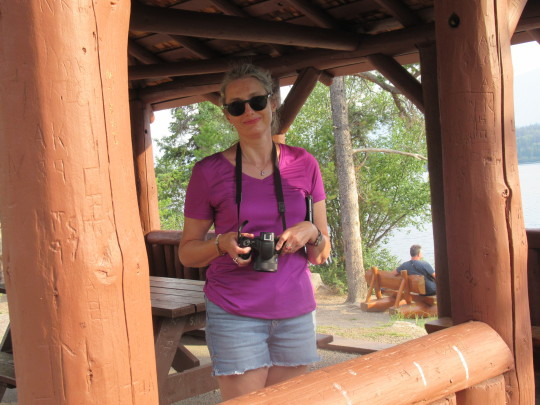
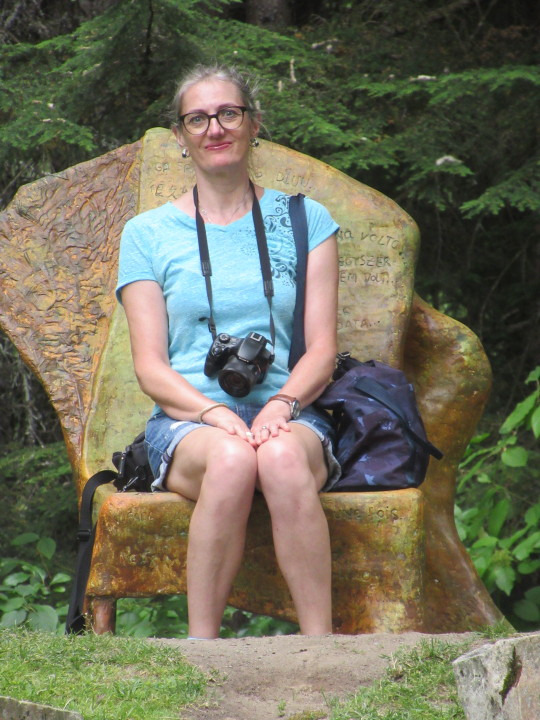
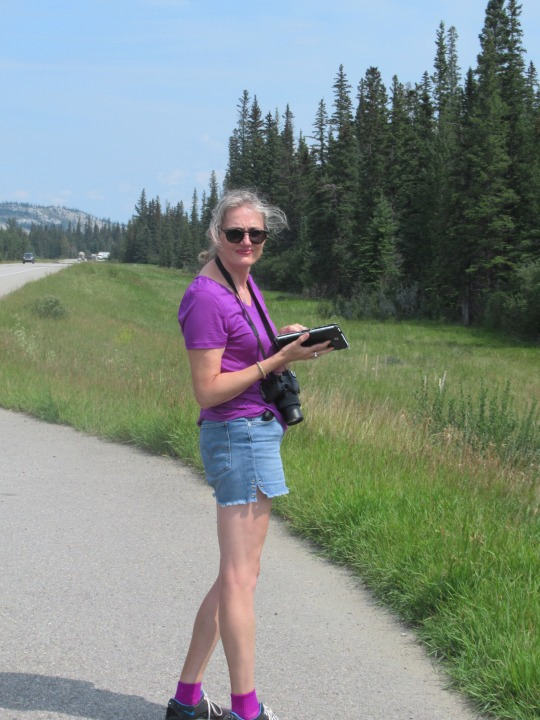
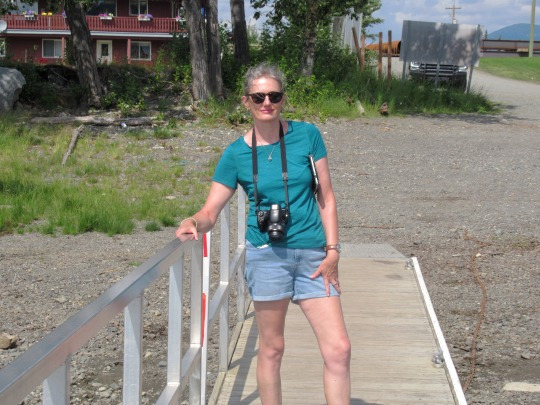
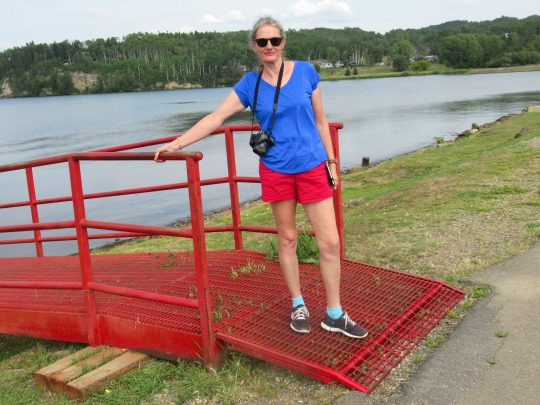
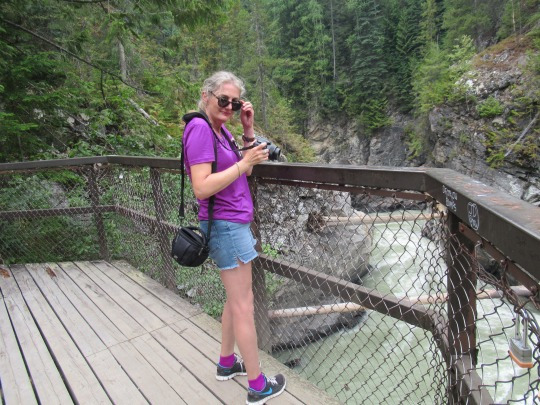
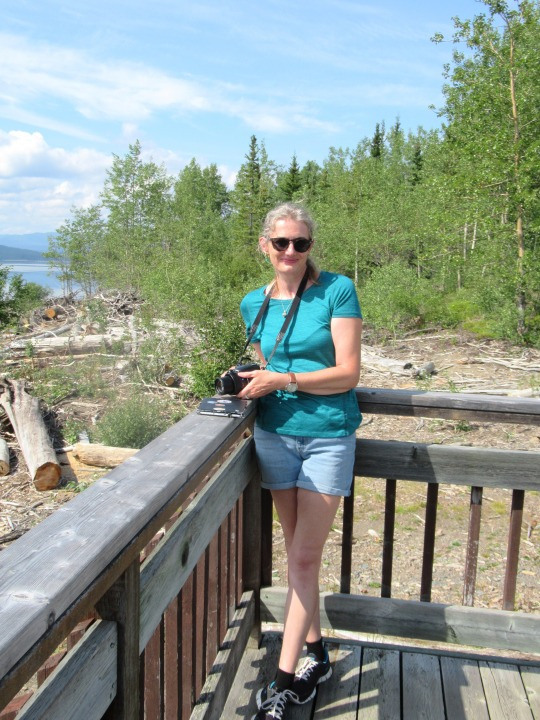
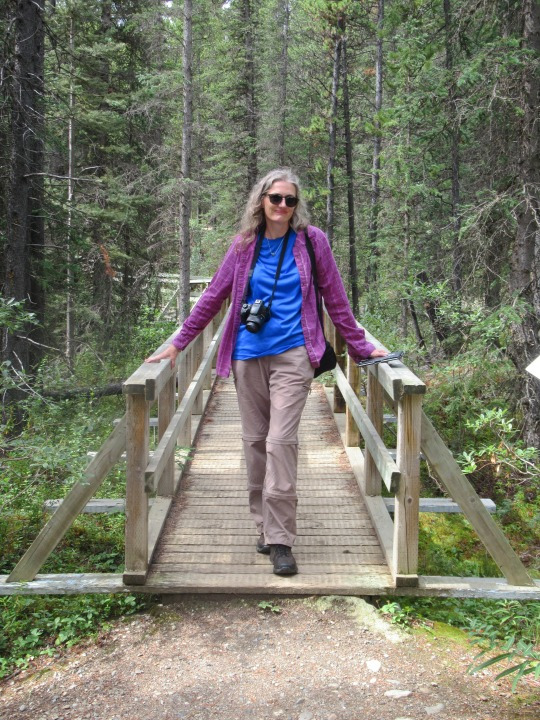
National Camera Day
Dust off an old digital camera, buy a disposable camera, or just fire up your smartphone and snap some pictures of your day to keep those memories forever.
The origin of National Camera Day is unknown, but it is used as a reminder for us to remember the existence of the camera and its many benefits. After all, how many other mediums can capture people and places so beautifully? How many other mediums can evoke smiles of memories past, or reminders of events that have shaped our lives?
The camera, in all of its many forms, is to be celebrated. This humble device has become a major part of our lives, and so, on National Camera Day, snap some photos during your lunch hour, on your commute to work, or whenever a moment of inspiration strikes.
Of course, the way you take pictures probably won’t be the way that people did it before the advent of digital photography and smart devices. Readers of a younger generation will be reaching for their smartphones to take photos of the world around them. And even if you are somebody who was well-versed in the wonderful world of 35mm film and zoom lenses, you might still find yourself reaching for your mobile device instead of that vintage camera from yesteryear.
Still, no matter what type of device you use to take photos, do something this National Camera Day. We all need to express ourselves creatively, so let your juices flow when you’re out and about or pottering around in your home, and take some magical pics.
History of Cameras and Photography
Cameras and photography have developed substantially over the years, from its early roots with the French inventor Joseph Niépce right up to modern day digital photography.
Joseph Niépce was a French inventor and is most noted as one of the inventors of photography and as a pioneer in the field. He developed the heliograph; a technique used to produce the world’s first known photograph in 1825, the view from the window at Le Gras the families estate.
In 1839, Louis Jacques Daguerre took the first fixed image that didn’t fade. He is recognized for his invention of the daguerreotype process of photography. He became known as one of the fathers of photography. His method required 30 minutes of exposure. He named the process – the Daguerreotype. Tintypes were developed in 1856 by Hamilton Smith and decades later, George Eastman invented flexible and unbreakable film that could be rolled. This was the birth of the first Kodak that was offered for sale in 1888.
In 1925 the Leica I went on sale, and its immediate popularity spawned a number of competitors. Kodak was one such competitor, and they released the Retina I in 1934. Though 35 mm cameras were still out of reach for most people things would soon change with the introduction of the inexpensive Argus A in 1936. The Japanese camera industry began with the birth of Canon in 1936 with its 35 mm rangefinder. Japanese cameras would soon become incredibly popular in the West after the Korean War as veterans and soldiers stationed in Japan brought them back to the United States.
While conventional cameras were becoming more refined and sophisticated, an entirely new type of camera appeared on the market in 1948. While TSLR and SLR were still the rage this new camera would change the way people would capture memories. This was the Polaroid, the world’s first instant-picture camera where no film development was needed. Known as a Land Camera after its inventor, Edwin Land, this camera was able to produce finished positive prints from the exposed negatives in under a minute. This new camera took the market by storm as people no longer had to sit still for long periods of time in order for their photographer to snap a picture.
The first digital camera that was commercially sold was in December of 1989 in Japan, the DS-X by Fuji. In 1991, Kodak brought to market the Kodak DCS-100, the beginning of a long line of professional Kodak DCS SLR cameras that were based in part on film bodies. It used a 1.3 megapixel sensor and was priced at $13,000.
The first commercially available digital camera, in the United States, was the 1990 the Dycam Model 1. It was originally a commercial failure because it was black and white, low in resolution, and cost nearly $1,000 but this changed and soon became loved by photographers.
With the standardisation of JPEG and MPEG in 1988, image and video files could be compressed for storage onto a SD or CF card. With the introduction of the Nikon D1 in 1999 at 2.47 megapixels, this was the first digital SLR that was entirely by a major manufacturer. The D1 cost just under $6,000 and was inexpensive for professional photographers and high-end consumers. This camera also used Nikon F-mount lenses, which meant photographers could utilise many of the lenses they already owned.
By 2010, nearly all mobile phones featured built-in camera with a resolution of 1-2 megapixels digital video camera. Many cameras also featured built-in GPS.
How To celebrate National Camera Day
You don’t need to know the history of the camera to celebrate National Camera Day, but while we have given you a snapshot of the people and events that have paved the way for the cameras we use today, you could make a special effort to learn more, be that at your local library or by looking up facts online.
The most obvious thing to do today is to take some pictures of your own. Use your smartphone if that is your camera of choice, but if you do have access to a digital camera or something that still uses film, brush the dust off it, and take it out for a walk. Who knows what you might see when you’re out and about, be it a comical moment that you can later share with your friends, or a piece of rare beauty that you can capture in a photograph to be looked on forever.
Take photos of your family and friends too, and along with any other pictures you take, share them on social media if they were digitally taken. And why not gift a photo to another? If you have taken something that will have special resonance for another, print it off and put it in a photo frame.
Today could be the day to push yourself out of your comfort zone. So, you might put down your phone and use an actual camera for your photos, and you could take shots of something that you have never attempted before. It could be a sunrise or sunset, birds in flight, or a scenic view at great height, as just a few examples. Just be careful if you attempt that last one!
Source
#California#summer 2024#original photography#National Camera Day#29 June#taking photos#NationalCameraDay#travel#vacation#landmark#cityscape#landscape#Canada#USA#Alberta#Yukon#British Columbia#Vancouver#Whitehorse#Whistler#Oregon#Washington#countryside#Jasper National Park#Banff National Park#Northwest Territories
2 notes
·
View notes
Text

Welp! It happened! I ruined not one but two rolls of film with my new baby Sophie. Didn’t take very long did it!? Lmfao
As I mentioned on a few posts back, I recently acquired one of my dream cameras. A Canon P Rangefinder! It’s been a dream shooting with it albeit somewhat more complex in terms of focusing.

Moving on from my first roll I wanted to try out another black and white film and so I went with a favorite, CineStill XX! That is before loading the 50D. CineStill should truly be sponsoring me at this point as much as I’ve mentioned them!

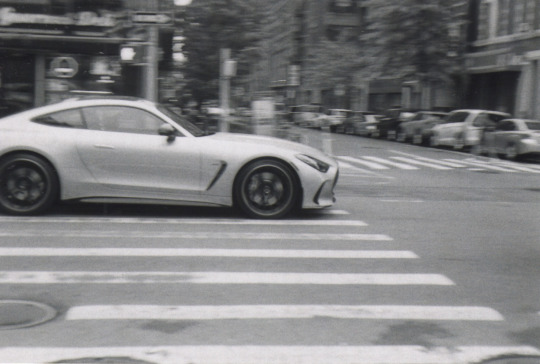
I loaded a fresh roll into Sophie on May 3rd and proceeded to shoot harder than a gunfight scene in a Michael Bay movie! Lol.
Upon receiving my prints, I realized I had fallen into a ‘Good News-Bad News’ situation.

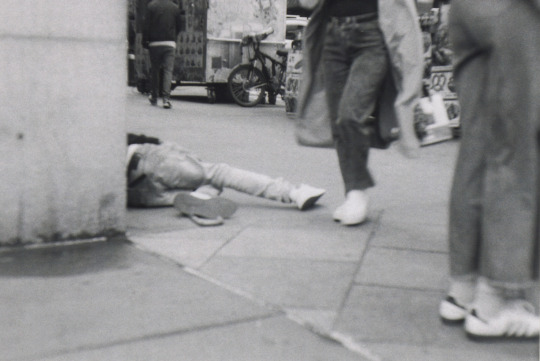

The good news? I metered all my shots perfectly if I do say so myself! Bad news? Well it’s blatantly obvious, almost no shots are focused properly.
Hey, it happens right?

As previously stated “Shooting a Rangefinder is not for the weak at heart!” Essentially I spent close to or over $100 for just about 5 really good photos (and that’s between TWO rolls!)

Normally I wouldn’t share what I deem to be big failures but then I remembered that this journey is personal. I’ve taken photography back for myself. I’ve dove deeper into film photography with the intention of learning all that I can all for the sake of self satisfaction.
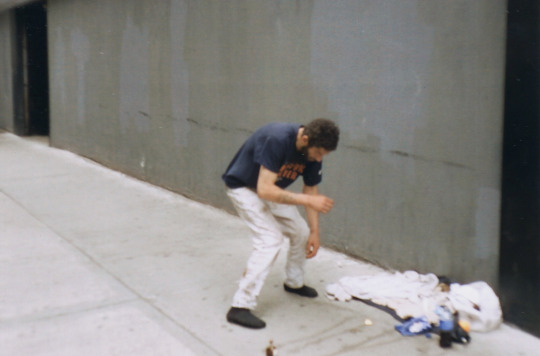
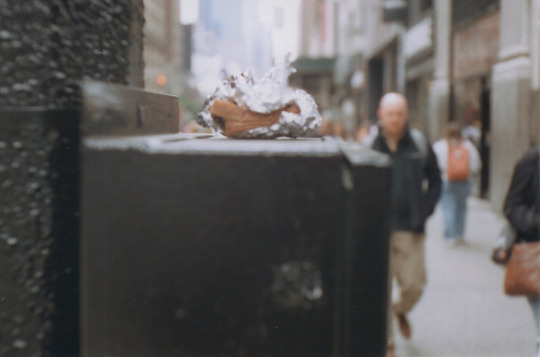
Like any other journey there’s always ups and downs. So I would be doing myself a disservice by hiding my failures and only highlighting my wins. I mean we’ve all failed a test before right?
Despite both rolls coming out a blurry mess, I remain proud of my work!
There’s nothing here I can’t attempt again.
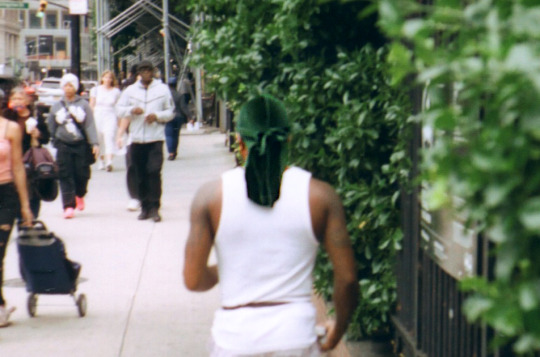
I really liked the photos of my brother Rudy, all the photos of the Mercedes’ and even the very under exposed shot of the belly dancer! Yes, that’s what that is on that last photo. Lmao.


When it’s all said and done, I remain proud because I’m sticking to the journey. Every shot is not gonna be a winner. Every roll is not going to yield multiple great results. The idea (at least for me) is to keep shooting!
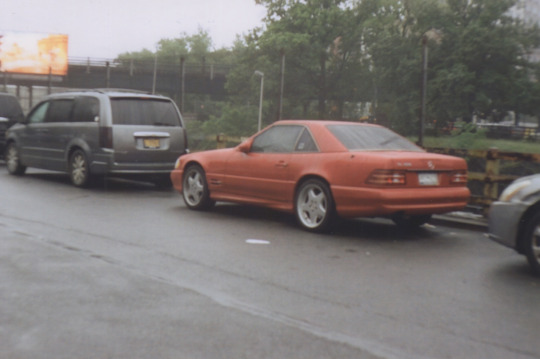
I told myself from the moment I received these prints that I won’t let this happen again. My focus has been reset (see what I did there!? 🤣) and I’m positive that moving forward the metering AND the focusing will be sharp as knives! So until the next roll...

Hope Ya Enjoy!
🎞️: CineStill XX // 50D 📷: Canon P (Sophie w. A P)
Eno Bull Photography
#MTA#2 Train#The Bronx#New York#New York City#Bronx#Manhattan#Queens#Brooklyn#Lincoln#Lincoln Continental#mercedes benz#AMG#Mercedes SLS#Air Jordan 1#Sneakers#Nike#Shoes#Barons#Barons Jersey#Michael Jordan#Jordan#Train Station#Homeless#Abandoned Cars#Auto Shop#Breakfast#Bagel#Aluminium Foil#Scarface
2 notes
·
View notes
Text
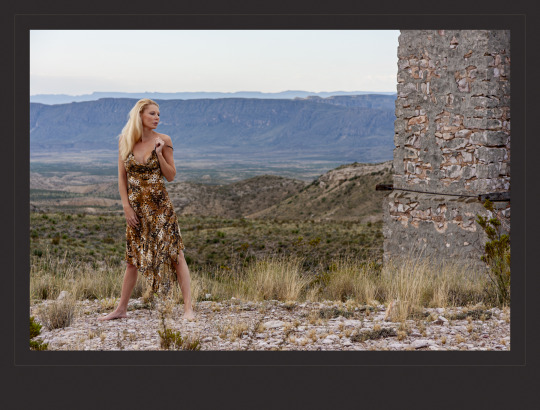
All the way back from 2007. my wife asked me the other day... my birthday... is there anything you have not done or anything that you would change in the past... THAT is a bit of a loaded question. The quick answer was, I really don't know. Of course what comes out of my mouth and what goes through my brain and heart are generally different. If it weren't that way I would be locked up on some island somewhere... or most likely not of this earth anymore. I will stick with this question in the realm of photography: I have no regrets about how I started in photography... I was young, had taken some art classes as a child and seemed to have an eye of it. In my teenage years, I remember everyone making fun of my dad for cutting off tops of heads with his snapshots of family. Probably around age 15 I found my dads camera. A 35mm Petri35 rangefinder. I never saw him use it but I grabbed it and loaded some color film. No idea what I was doing and teaching myself along the way... Badly I might add... I created a bit of friendship and respect with the camera. I loved aligning the images in the view finder, the smell of the back of the camera, and the heft of the camera... the light click of the shutter. Those memories are vivid to me. I took pictures of my friends and their cars, trees and flowers... then the next stage of life was the Army. I have a Pentax K1000 and a zoom lens. More photos of friends and maneuvers in the field. Travel photos, I was stationed in Oklahoma, California, Germany & Pennsylvania. Binders of 35mm negatives and color slides... to be destroyed by me through my ex wife... That is a regret ( I should have taken those binders and all of my gear. ) Jump ahead to a new life, a new 35mm Pentax ZX30. It was a good camera but felt like plastic, lightweight and cheap... Digital was in full swing by then and I got a Canon 20D... and my first trip out west to shoot with professional models... probably my next regret can 10-15 years later when I stopped shooting with models. I became a little bitter that I was not able to afford the fees. I was shooting with friends and we were splitting the fees, but I still wasn't happy. I felt self conscious when working closely with even friends... I soon just stopped making up bullshit excuses... and now I pull up old photos like this and relive my happiness if only for a few minutes. I tried to get back to shooting models maybe 5 years ago, and my experience was less than good. The model was rude, rude in front of another photographer and model. I just walked away... never got back on the proverbial bike again. That's a lot to unpack... one of the things I did as a photographer was print images for my models... this is Savannah Costello, I had sent her 5 large mounted prints from our shoot. She messaged me when she got her 1st house and thanked me because she had our photos to hang on her walls... Maybe another regret in this digital world is how many photos live on an old hard drive or only in digital realms...
#elementoftheeye#chambersburg#original photographer#original photograph#original photography#digital
18 notes
·
View notes
Note
Think fast!
1, 2, 4, 5, 9, 11, 12, 13, 14
It's Molniya! Thank you! I've been wanting to do this for a while!
Are there any in-sys friend groups that wouldn't happen in canon, but make sense to you?
It's me and Clockwork. Where we're from, we'd be on opposite sides of a war.
2. What source do you have the most fictives from?
It's a tie between Project Guardmaid (a story that Katja is writing) (where I'm from!) and Mobile Suit Gundam. I guess all of us are OCs.
4. Who has the coolest name in your opinion?
To be honest, I think it might be me. It's a mispronunciation of the Russian word for lightning, but I like it a lot. A close second is Rust. Very charming, very simple.
5. What's your favorite thing about your source?
Probably the magic. It's a blessing and a curse. You can do so much.
9. What's a quote or lyric that reminds you of yourself?
To be honest, I could give you a rather intense answer, or I could give you an equally intense answer with a fair helping of introspection. I'm giving you both.
One is from Unjust Depths. I'm no pilot, but something about it really speaks to me.
"Interred in a tomb of steel, the rangefinders and cameras became her eyes. And the guns were the only hands she had, and shooting was the only touch she had left."
Another is from a clicker game called ALTER EGO. One of the characters analyzes you based on how you tell a story(I believe that's how it went), and the last part of her read on us resonated with me very well. I'll post the whole analysis because it also painfully accurate, but I'll highlight the part I'm talking about.
"Deny stable values / Pure Self-Denial.
You must truly hate yourself. With the ability for deep self-analysis, it's so easy to find things to loathe about yourself. You're very pure and connected to your own inquisitive nature. You've never forgotten what it is to be a child, and you tend to thoroughly investigate whatever catches your fancy. You're both incredibly pure, and awfully dangerous. Never fear. There's a place for you here."
11. Who's your best friend in-sys? Would your sources be friends, do you think?
It's Clockwork. Again, we'd be killing each other in an always-war. But once it ended... maybe. Probably. It took me a long time to see automatons as people, but I got there. Earlier than most of my kind, really. Most automatons are more human than any of us ever were. I remember dancing with someone like her post-war, in an underwater manufacturing plant turned university. Huge ballroom, glass ceiling just 30 feet below the surface at low tide. It was beautiful, the way the waves twisted the sunlight down upon us. I traded partners with some officer and this blank-faced automaton girl took my hand. Her voice was lilty and robotic, which was... very strange, considering that most every other automaton I've ever met spoke just like any human would. Great dancer. I think we danced 3 separate times that night. I don't remember much else. Was that her? Probably not.
I've gotten way off topic. I felt like sharing.
12. Do you miss anyone from your source?
Laika, my... lover? She was so cocky and it drove me insane. Gaia's most charming vehicle mechanic. I hope she's doing okay. I hope our daughter is doing okay.
13. What do you look like in the head? How does that compare to your source? The body?
I look almost the same, lithe and toned. Shoulder length silver hair(It's kind of swoopy!) and dull red eyes. Although I dress a lot more informally up here than I did where I'm from. No uniforms. Skinny jeans and long sleeve shirts mostly. Turtlenecks too. Sometimes I wear a plate carrier. Occasionally. Body armor is like a bulletproof hug. It's comforting.
14. What's your favorite song?
Psycho Dreams - Kill Eva
5 notes
·
View notes
Text
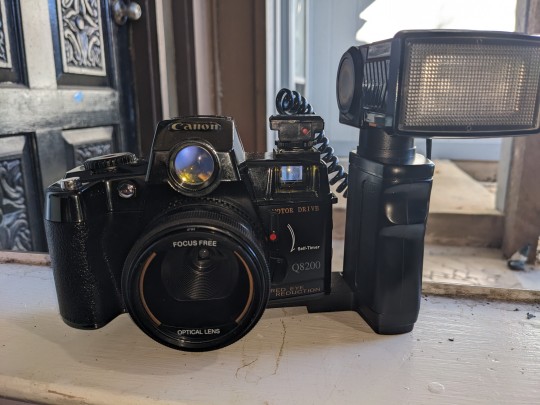
One of my favorite cameras in my collection is this counterfeit Canon I got at a Goodwill a few months back. There's a number of these cameras on the market under various names, usually close-but-not-illegal names like Canomatic or Olympia or some shit but mine says straight up CANON on it with the stylized text and everything.
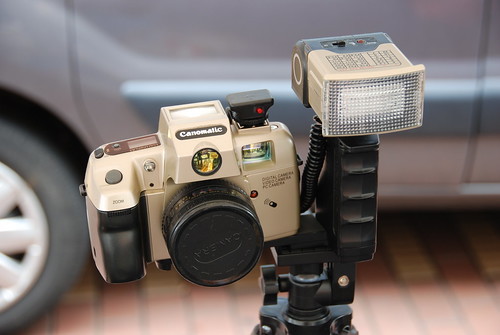
(above: example of the same camera under the Canomatic name)
These things are made by the Ouyama Corporation in Taiwan, and needless to say they are a load of cheap dogshit. The lens looks removable, even has a button for it, but the button is fake and the lens doesn't come off. In fact, the large lens itself is fake, there's a tiny glass lens in the base of the lens. To distract from the all-plastic construction there are heavy lead weights inside to give it a professional feel. The flash it comes with is weighted too but if it wasn't it'd actually be a really solid flash. The camera takes AA batteries which is weird.

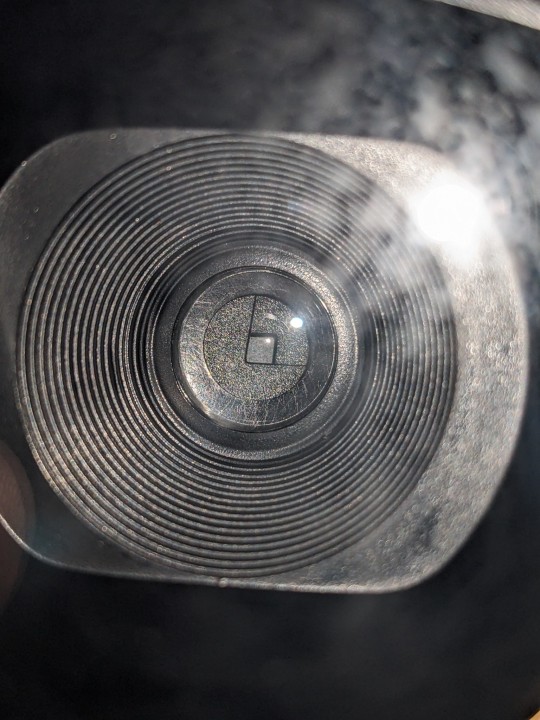
A couple observations:
Shoots 35mm even though some other branding markets them as digital cameras.
Rather than auto-rewinding the film at the end of the roll, you have to manually turn the dial (which on a real SLR would be for shutter speed) to a rewind option and press the shutter button.
The aperture is a square which I hear results in weird triangular bokeh.
Has an adjustable aperture and at least some light sensing capabilities, as if you cover the light sensor or it's dark and you don't have the flash on it actually switches to bulb mode, though without anywhere to attach a shutter release cable to, it's not very useful.
For some reason there's two viewfinders, a second lens top-down one like a TLR would have, and a rangefinder on the left. The top-down view, I assume, tries to replicate the focus of the lens, since it's blurry until about five feet out.
The timer does work but it counts down with this insanely loud annoying beeping like a smoke alarm.
There is no ISO setting and no pins to detect ISO from your film roll (I use plastic self-rolled cassettes anyway so it doesn't matter).
You CAN in fact actually take pictures with it. It is despite everything a real camera.


(Photos from this JCH article by Joe Aguirre, 2012)
There's not much info on these cameras but there's a Camera Wiki page and an article on Japan Camera Hunter about various forms of this thing if you want to know more. I'm excited to shoot a roll on this and see if anything at all turns out!
14 notes
·
View notes
Text

#111
An early photo from Patreon.
My Ricoh is my most fiddly camera for me to shoot on. For a start, it's fully manual, and I'm half blind, so I have intense difficulty getting it in clear focus. Most of my film cameras are so old, the lenses are fixed focal length and aperture. A couple can change the aperture by sliding a plate in and out between two or three options, but you still can't really zoom or change the focus at all. This benefits me, because without autofocus, I'm kind of left just stumbling about in the dark.
But my Ricoh has so many tiny little problems that it does not matter at all. The shutter sticks a little bit, the light metering is all wonky and doesn't work all that well, and the light leak ranges from non-existent to tremendous from shot to shot. My inability to see through the rangefinder hardly matters at all when the camera is actively working against me half the time. It's not so broken that it's unusable, but it's just broken enough that it produces photos on the same quality of all my other wonky old antique cameras that also have minds of their own. When I want sharp quality, I use the Canon with its autofocus and its light meter that can use the ISO I've set to determine the shutter speed. When I want to be surprised, I use film.
And even though my Ricoh weighs as much as a house, and has probably the most problems of any of my cameras, it's definitely my favourite film camera to take out when I go on adventures.
Prints now available on Redbubble!
2 notes
·
View notes
Text
i'm so good at photography
it was 2010 when all i had was a dream to own my very first dslr, i made some money from graphic design commissions and bought one, it was a nikon d3100... weeks before i got it i was watching youtube videos on iso, shutter speed & aperture so that i'd be able to shoot manual mode when i got it... you would have thought i was shooting for years the way i was getting all my exposures and compositions right... i got a job at beaches (sandals) as a resort photographer where i did photoshoots in the evenings and roved the beaches and waterparks by day taking pictures of kids... all those images i took, hundreds of thousands that helped to hone my skills, there aren't many shooters like me with the experience that i have... when 2012 came around i left sandals and started working on cruise ships, during the training in miami i said that i wanted to document my travels on film so i made an eBay account and bought a yashica, that's how i started shooting on 35mm... during my contract i didn't really like the yashica because i thought i wasn't getting any good shot or if they were in focus because it was a rangefinder so i bought my first slr, a canon ae1 program... this is when i started to shoot like it was my last day on earth, loved that camera so much.. i had it with me in europe, Australia, south america, alaska and hawaii.. all that time i was still shooting digital on the side so i got a nikon 610 which was my first full frame digital camera and a 85mm to go with it, that was such a nice combo... i left cruise ships in 2015, there was no way to develop my film rolls in jamaica so i decided to start developing from home.. after about 2 years i decided i would just shoot exclusively on film and that has helped me to develop my skills so much... i learned stuff like sunny 16 & the zone system, now i hardly use light meters in the day or even in the night.. i've come such a far way and i am so grateful for that you don't even know, all i do is shoot everyday even if it's one photo or a selfie, i just hope that all this time spent on my craft isn't wasted and i will start selling prints for thousands of dollars and get to go on assignments around the world...
#jamaica#photography#35mm#filmphotography#canonae1#d3100#d610#txt#txt post#text#text post#my text#textos#i be yappin#i feel like i could do so much more and be more talented#film
2 notes
·
View notes
Text
Yashica YF: Yes, finally! A Leica-esque rangefinder
You may have noticed me alluding to a yet-unnamed camera that was in the shop for like forever. Well, I finally got it back, all nice and serviced. So now here is the big reveal: The camera is a Yashica YF! Never heard of it? I didn’t either until last summer. Back then, I had just been gifted a Canon Canonet QL17 G-III. This was after losing both the Minolta Hi-Matic 7s and the Olympus 35RD in…

View On WordPress
2 notes
·
View notes
Text
Canon Demi camera
I've never really been a big fan of Canon cameras, as I've always been a Nikon person. In my opinion, Canon cameras weren't well-made, especially in the 1960s, when this camera was manufactured. Their line of early rangefinder cameras has nice optics and is comfortable to shoot with, but I just prefer the Nikon line.
One of my frustrations with Canon was working in a camera store during the 1970s, when the unbelievably popular Canon AE-1 was introduced. For over a year, the camera was the top seller in our chain of stores as we couldn't keep them in stock, and people absolutely loved it. Personally, I think that Canon held back production on the camera to add to the mystique of having a camera "hard to get", which added to the popularity of the camera. Daily, we had so many questions about that camera. Today, I could do a demo on the camera with my eyes closed.
I don't remember the exact year I purchased the Canon Demi camera, but I know I've had it for several years. My guess is it's been about 8-9 years. I do remember, I purchased the Canon Demi camera at a flea market, mainly because the camera was red, and I'm a sucker for colored cameras. Checking out the camera at the time, it had the original red camera case, and the person who sold it to me said the camera's meter wasn't working.
Having had many cameras with a selenium cell light meter, they tended only to last around 20 years or so until the selenium cell loses the ability to read light and work in cameras. I wasn't worried about that at the time of purchase, as the primary motivation to purchase the camera was that it was red and had a red case.
The Canon Demi was introduced in February 1963. The camera has a sleek and modern design from this expressive period. The camera has rounded corners and a straightforward point-and-shoot viewfinder with a zone focus system. It wasn't made to be a professional camera with built-in focus capabilities, but for the family and photo hobbyist. A selenium match needle metering system was easy to operate, keeping costs down for the consumer. By the end of 1963, the Canon Demi came in four colors: traditional, black, white, blue, and red. These colors didn't last long and were quickly discontinued.
Another advantage of the Canon Demi was that it was Canon's first half-frame camera, introduced four years after the Olympus Pen camera in 1959. Rolls of film at that time had either 20 or 36 exposures, so shooting 40 or 72 photos on a roll of film was excellent and considerably less expensive for the family to use.
In September 1964, Canon introduced the improved Demi S, which had a 30mm f/1.7 lens and an improved metering system.
In April 1965, the Demi C, with interchangeable lenses, was introduced. You had the standard 28mm f/2.8, and a 50mm f/2.8 was available for the camera.
The Demi Rapid, with a rapid loading system, battery-operated CD meter, and self-timer, was released in June 1965.
May 1966 saw the release of the very popular and top-of-the-line Canon Demi EE17. This camera was the same as the Demi Rapid without the rapid loading system.
In April 1967, Canon returned to the original style with the Demi EE28, back to the Selenium cell metering system, and a 28mm f/2.8 lens. In four years, Canon introduced five different models of the same camera, which were very similar to what the auto industry was doing then.
History:
Canon Inc., a large Japanese multinational corporation, has played a significant part in the evolution of camera technology. The company's journey in the camera industry began in the 1930s and has since developed into one of the most recognized names in photography worldwide.
Canon's first camera, the Kwanon, was developed in 1934 by a small team of Japanese engineers. It was Japan's first 35mm focal-plane shutter camera named after the Buddhist goddess of mercy. Although it was never mass-produced, it laid the foundation for Canon's future success. In 1935, the company adopted the name Canon, signifying precision and excellence.
During the 1940s and 1950s, Canon focused on refining its rangefinder cameras. The Canon II, released in 1946, helped the brand establish itself as a competitor to German camera makers like Leica. In the 1950s, Canon began to diversify its product line. By 1959, it introduced the Canonflex, its first single-lens reflex (SLR) camera—this marked Canon's entry into a growing market that prized versatility and interchangeable lenses.
The 1970s and 1980s were transformative decades. In 1971, Canon launched the F-1, a professional-grade SLR that rivaled Nikon's offerings. Later, in 1976, the company released the AE-1, one of the world's first cameras with a built-in microprocessor. The AE-1 was affordable, reliable, and popular with amateur photographers, helping Canon grow its user base significantly.
In 1987, Canon introduced the EOS (Electro-Optical System) line, beginning with the EOS 650. This groundbreaking autofocus SLR system used a fully electronic lens mount and paved the way for future innovation. The EOS series would become one of history's most successful camera lines.
Canon embraced digital technology in the 1990s and 2000s. The release of the EOS D30 in 2000 marked Canon's serious move into digital SLRs. This transition peaked with iconic models like the EOS 5D series, which brought full-frame digital photography to a broader market.
In the 2010s and 2020s, Canon adapted to mirrorless technology, introducing the EOS R system in 2018. This full-frame mirrorless platform represents the company's latest push to stay at the forefront of imaging technology.
Today, Canon continues to be a leader in photography, producing a wide range of cameras that cater to everyone from beginners to professionals, while also advancing imaging technology across multiple industries.
My Camera:
My Canon Demi camera is 4.5" wide by 2.75" tall and only 1.5" deep, including the compact 28mm f2.8 lens. It weighs 14.4 oz and is not adorned with frills, bells, or whistles. It's a very typical 35mm camera with a zone focus system and shutter speeds ranging from 1/250 to 1/30. The aperture settings range from F/2.8 to F/22.
The zone focus is set by moving the lens to either a mountain for infinity, three people for a group, or one person for a portrait, and these symbols are set around the lens.
The camera uses a match needle system. You point the camera at your subject, and when you turn the dial around the outer ring of the lens, the shutter speed and aperture are set to the ASA/ISO you set within the exposure ring.
The back door latch is on the left side of the camera, which unlocks and opens the film door to load film into it. Drop the 35mm cassette into the camera's left side and bring the leader to the take-up spool. Slide the end of the film leader into the slot on the take-up spool. Make sure the film sprockets are on the back drive gear.
One thing I do to make sure the film is moving in the camera is take up the slack by winding the rewind knob a few turns to take uo the slack in the film cassette. That way when you close the back of the camera and wind the camera to get it to the first frame, watch the rewind knob turn so you know the film is advancing in the camera. Checking the rewind knob is a good thing to do with any 35mm camera. I can't tell you how many times I've seen where people think the film is advancing, but the film wasn't loaded correctly, and no images were ever recorded on the film.
Once you've taken all the photos on your roll of film, press the button on the bottom of the camera. This releases the winding gear inside the camera so you can easily rewind the film back into the film cassette. If you don't press the rewind button, you'll tear all the film sprockets on the roll of film, making the process more difficult. After the film is rewound into the film cassette, open the back and load a new roll of film.
My Results:
I took this camera on my trip to Barcelona this week, partly because I had a roll of older Plus-X film with 20 exposures, and the second reason was the camera's shutter works, but the meter doesn't. I wanted to experiment with some of the exposures to see if I could get exposures on the roll of film. It probably wasn't the best idea to try a 40-50-year-old roll of film under these circumstances, but I wanted to write about the camera and didn't want to shoot 72 exposures to get bad results.
The results turned out pretty well, and the camera meter is in decent condition, as many of the images turned out pretty well. However, the film is pretty grainy for being ASA 125. Nonetheless, here are a few photos from walking around one of the main shopping areas in Barcelona.
Conclusion:
My expectations for the camera weren't high, so I was pleasantly surprised by its relatively easy-to-use nature. Basic focus and a match needle meter make this compact camera very fun and easy to use.
If you enjoy vintage manual cameras, this is one to put in your coat pocket or hang around your neck. It gets twice as many photos from a roll of film and records memories for the photo albums. It is another excellent camera to use on a daily basis.
Thank you for taking a few minutes to read about this fantastic, compact half-frame camera. A faster lens would have been nice, but it's unnecessary under most circumstances.
I also sell cameras on eBay under Cuny's Cameras and Photos. Take a look, and you may see something you are interested in or a camera or two that piques your interest.
Click on the link to read about some of the other cameras reviewed.
Until next week, please be safe.
#Camera#camera collecting#Camera for fun#Camera from the 1960s#camera from Japan#japan#Japan#japanese camera#made in japan#cameras from japan#Canon#Canon Camera#Canon Demi Camera#Canon film camera#Canon half frame camera#half frame camera#film#Film#film camera#film camera collector#film camera collectors#film in camera#film shooter#film photography#film cassettes#fun with film#film in old camera#35mm#35mm cassette#35mm camera
0 notes
Text
Canon AV-1: Classic Camera Review
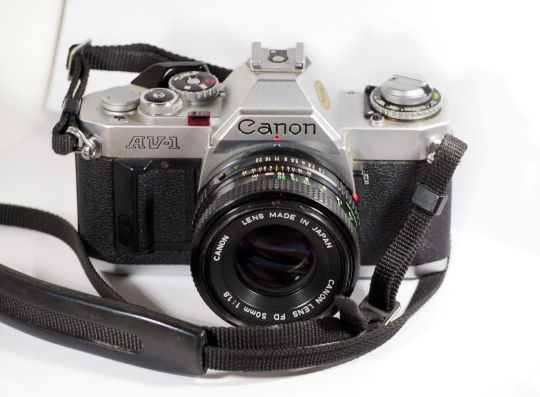
The Canon AV-1 is a 35mm film SLR that was first released in 1979. While it closely resembles its famed older sibling, the 1976 AE-1, the AV-1 utilizes aperture priority instead of shutter priority and lacks full manual control. Although the AV-1 isn't as well-known and doesn't have the manual exposure options of the AE-1, its lower visibility can lead to great deals on auction sites and in the used camera market.
In this classic camera review, we will explore the history of the AV-1, its strengths and weaknesses, and provide you with the information you need to decide if this camera is right for you.
A Brief History
Seiki Kogaku, which later became Canon, began developing rangefinder cameras in 1933 with the Kwanon prototype, inspired by the Leica II 35mm camera. In late 1946, they released the SII, which introduced a combined viewfinder and rangefinder system, departing from the Leica design while retaining a similar look to the Leica III.
In 1956, Canon moved away from the Leica II style and adopted a more contemporary design. The Canon VT, introduced that year, was the first Canon camera with a swing-open back for easy film loading, although it still used the Leica lens mount.
From 1961 to 1976, Canon partnered with Bell & Howell, with several Canon products sold in the U.S. under the Bell & Howell brand, including the Canon 7 Rangefinder, Canon EX-EE, and Canon TX.
In 1959, Canon developed the Canon R lens mount for SLR cameras and released their first SLR camera in the same year. This was followed by the introduction of the Canon FL lens mount in 1964. In 1971, the FD lens mount standard was introduced with the highly successful Canon F-1.
Canon's success continued throughout the 1970s with numerous popular camera releases, including the AE series and the AV-1 in 1979. Following the FD mount, Canon launched the EOS series in 1987, bringing autofocus capabilities to their later film cameras and DSLRs.
Type
35mm focal-plane shutter SLR camera
Picture Size
24 x 36 mm
Kit Lens
Canon New FD 50mm f/1.8, New FD 50mm f/2 (Quick mount/demount type)
Lens Mount
FD mount
Shutter
Bulb, 2, 1, 1/2, 1/4, 1/8, 1/15, 1/30, 1/60, 1/125, 1/250, 1/500, 1/1000 sec. All speeds stepless and controlled electronically. Built-in self-timer (with adjustable delay and blinking LED).
Flash Sync
X-sync hot shoe.
Viewfinder
Fixed eye-level viewfinder. 0.87x magnification, 92% vertical coverage, 93% horizontal coverage. Split-image rangefinder focus screen. Exposure meter needle, shutter speed scale, overexposure and underexposure warnings, battery check index and camera-shake warning, and Flash-ready indicator.
Metering &
Exposure Control
Aperture priority. Metering range at ISO 100 and f/1.4: EV 1 – 18. Film speed range from ISO 25 to 1600.
Power Source
One 4G-13 6 V mercury oxide battery or 4LR44 alkaline battery
Film Loading &
Advance
Slotted take-up spool. Advances with camera-top lever’s 120 stroke (partial strokes enabled). Ready position at 30.
Frame Counter
Counts up. Resets automatically when camera back is opened.
Film Rewind
Camera-top crank
Dimensions &
Weight
139 x 85 x 48 mm, 490 g
Aesthetics and Build Quality

The AV-1 features a classic design, equipped with all the characteristics a film newbie would enjoy, This exemplified by its large dials and a chrome body. The AV-1 fits in well with any popular SLR from the 70's or 80's.
Constructed with a combination of metal and plastic, it feels solid and durable for an entry-level camera. The majority of the exterior is made from sturdy plastic, which is typical for cameras of its class. However, Canon cameras from this era are not weather-sealed, so users should avoid using them in rainy conditions.
While the AV-1 may not feel as refined or luxurious as higher-end cameras of its time, it remains pleasant to shoot with. It has a comparable feel to Olympus models like the OM-10 or OM-20, performing well alongside its contemporary consumer SLRs.
Lens Selection
The FD mount, developed by Canon in March 1971, served as the standard for interchangeable lenses in Canon SLR cameras until the EOS series was introduced in 1987. The FD mount remained in use through the release of the Canon T60 in 1990, marking the end of the FD system.
During its 21-year production run, Canon introduced 134 different FD lenses, ranging from 7.5mm to 1,200mm across seventeen fixed focal lengths and nineteen zoom ranges, making it one of the most extensive manual focus lens systems ever produced.
This makes the system very attractive to 35mm film photographers who are looking for the high optical quality, while not needing auto focus capability.
Sample photos: Click Here
Layout and Controls

With user-friendly controls, Canon's AV-1 is perfect for people new to photography or those looking for an easy-to-use camera that retains some aesthetic control with the use of its aperture priority shooting mode.

Looking through the viewfinder, the shutter speed is indicated by a needle that moves as you adjust the aperture. Focusing is performed using a split prism, and all primary controls are conveniently located on the lens, making the shooting experience straightforward and easy to grasp quickly.
There is a fully automatic mode, but I found the 30th of a second shutter speed used a little slow for impromptu photos.
If you are familiar with other aperture priority cameras, such as the OM series (other than the OM-1), the Pentax MV-1, Yashica Electro 35, Chinon CA-4, then you will feel at home with the AV-1.
Click here for a full tutorial of the Canon AV-1
Reliability
The AV-1 is generally regarded as a reliable camera, thanks to the solid construction typical of Canon cameras from this era, making it well-suited for regular use. However, like any older camera, its reliability depends on its condition. Models that have been well-maintained or serviced recently are likely to perform to a higher standard than models that have been left unused for long periods of time.
If your AV-1 does encounter problems, there are plenty of online guides and user manuals that can assist with repairs. Given Canon’s popularity, finding replacement parts shouldn't be difficult. It's worth noting that due to the camera's affordability, purchasing a whole new body may make more financial sense than paying for repairs, which can lead to waste, especially when the camera isn't especially rare or sought-after.
Most cameras of the AV-1's age would benefit from a CLA (Clean, Lubricate, Adjust), but with a bit of care and regular use, they can remain reliable for many years.
Price
You can typically find a working Canon AV-1 for around £60-£100, depending on its condition and any included lenses. It's advisable to aim for the lower end of that range since there are more appealing options available around the £100 mark.
When shopping online, ensure you only purchase from highly-rated sellers on platforms like eBay, or consider buying from a reputable used camera shop that offers a warranty.
Before committing to an AV-1, consider exploring other cameras within a similar price range. For £50 to £100, you might also come across options like the Olympus OM-20, the Canon AE-1, Nikon EM, or Pentax K1000, which provide manual controls.
Conclusion
In conclusion, the Canon AV-1 is a great option for people stepping into the world of film photography. With a wide range of sharp and affordable lenses, and user-friendly controls, you can't go wrong with the AV-1 or any of its Canon relatives of the same era.
Be sure to shop around and compare options to find a camera that fits your needs. If you're just starting out, automatic shooting modes may appeal to you, but a camera offering manual settings can provide more room for growth in the future.
0 notes
Text
if u don’t know where 2 start with choosing a film camera (like i didn’t know where 2 start because i was overwhelmed by confounding advice on the internet and blinded by expensive cameras. and when i asked someone i knew for advice he said “it’s too complicated” which pissed me off so bad like i had to muster up the courage to ask him and he came back to me with the oh girls wouldn’t understand vibe) then let me help you:
- if you want to mess around taking pictures of friends and not take anything too serious : any (i mean any when i say it) point and shoot will suffice. go to a local market and see who’s selling one because usually you’ll find them for like a fiver. or ask a relative if they have one you can use (i hate it when people say this but they’re kind of right) you don’t need to shell out like 200 on an olympus mju ii i promise
- if you’ve messed around with film a little and want something more than a point and shoot, get one of the canon slrs that look a bit like modern dslrs and mirrorless. they’re dirt cheap and they work beautifully and since you’re probably already familiar with the bodies (you might already have some lenses too) it’ll be an intuitive switch. i started shooting film with a canon eos 300 which works a treat
- maybe you want to have more intuitive creative control or be forced to understand the way the light affects the film inside the camera? a manual SLR is your jam. a lot of these older ones are fully mechanical and soooo fun to use. there are lots around and you will be overwhelmed. a lot of the ones on ebay that are cheap are very broken or the lenses have mold everywhere (not ideal). these cameras are what really made me love film so if you’re ready to truly get into it then get 1 !!! i have the olympus om-1 with a basic 50mm lens and it is truly the love of my life. others i can recommend are the pentax k1000 (but it has been overly recommended as a beginner camera so now ppl are overpricing it. i’d stick with olympus), pentax KX (which is only slightly different to the k1000 i bought one and it was broken my fault for buying one for 30 pounds) canon ae-1 or if you wanna get a bit fancy the nikon f2 . they’re all good and i would go as far as to say they all do the same thing. this compared to the newer canon SLRs is all kind of a feel thing like you’ll probably appreciate holding one of these pretty old very beautiful cameras a bit more but they’re pretty similar in terms of image sharpness and such. point and shoot images can be a little blurry or distorted but that’s their charm
i haven’t gotten into rangefinders so i can’t comment on them but leicas are obviously famous for a reason and .. really expensive so like don’t get a leica as your first camera you freak
and also don’t jump into medium format cause it’ll confuse you (but if you want to i’d say get a TLR or a mamiya 645 because i love my 2 mamiyas)
0 notes
Text





I know it's been a while but got some new stuff to post!
My 2 rangefinders, my Leica M3 and Canon III-A, are both down for repairs at the moment so my only 2 dependable cameras are my AE-1 and Yashica. Here are a few great pics I took with my old trusty AE-1!
Canon AE-1 w/50mm lens Portra 160
0 notes
Text
youtube
Wk1: SDL: Analysis/Research of the photographer Teju Cole.
"My Looking Became Sacred"
Teju Cole is a Nigerian-American writer, and photographer, and a former photography critic for the New York Times Magazine. He is known for photography that explores themes of absence, and presence, and I noticed that he captures the mundane, normalities of life, the kind of images we come across daily as we live our lives, he portrays an observation simply as it is. His photographic work is characterized by serene and contemplative images, and he mostly captures landscapes, urban scenes, and still-life compositions, almost as if he is a tourist of his own life, and from his story, that comes from his loss of sight in one eye, and the importance to capture whatever he can, as all things he sees is sacred, even the mundane. Cole's photographs are often devoid of human figures, focusing instead on the environments that suggest human presence.
In his book Blind Spot, he does a stunning job of capturing spaces and moments, holding them still in time, showcasing his observation for us to also observe as he did, and he combines it with his almost lyrical storytelling of the 'place' alongside it. So, he doesn't make overt self-portraits, but you definitely capture the 'sense of self' of the photographer.
In terms of his tools, I found his preferred camera choice and his reasoning ( in the past) to be particularly interesting to me;
(Source: https://niemanstoryboard.org/2016/02/02/annotation-tuesday-teju-cole-on-far-away-from-here/)
Professional-Grade Canon DSLR: During a stay in Zurich, Cole used a high-end Canon digital camera. However, he found it less suitable for capturing the city's nuances, noting that while digital cameras perform well in bright conditions, they often struggle with highlights, resulting in a "plastic sheen" in images.
Contax G2 Rangefinder: Alongside the Canon, Cole experimented with this film camera but felt it lacked the focusing control he desired and missed the tactile feedback of an SLR's mirror mechanism.
Yashica SLR: Seeking a more responsive tool, Cole acquired a vintage Yashica SLR with two lenses from a dealer in Zurich. He appreciated the camera's simplicity and the immediate feedback provided by its mirror mechanism, which aligned with his preference for film photography's tactile experience.
...He may not be using that now, I did read that he uses a range, but just an interesting mental note about the 'tactility' of a portrait. Also he likes to stick with a particular lens for a whole project to create a standardised or unified look.
"— This idea that when you’re making art, you have to have a beginner’s mind. You cannot approach it from a know-it-all perspective. If you’re not opening yourself to the possibility of radical simplicity, then you’re going to miss it. You’re going to think there’s no there there. But you have to give it the chance." - Teju Cole
0 notes
Photo

"Two Cameras, One Passion: Old Meets New" I recently found myself comparing the timeless charm of a classic Canon rangefinder with a modern Canon compact. The film camera whispers stories of the past, while the digital one pushes creative boundaries with convenience. Holding both feels like bridging two eras of photography. Looking to start or grow your camera collection? DM me or explore my shop: 📍 Etsy: https://www.etsy.com/shop/AntiquesUSSR7 📍 eBay: https://www.ebay.com/str/gavshyn #filmphotography #filmcamera #analogphotography #35mm #shootfilmnotmegapixels #vintagecamera #classiccamera #ishootfilm #filmcameraculture #believeinfilm #filmforever #shootingfilm #filmisnotdead #handdeveloped #filmlife
0 notes
Note
How do you create that vintage look?
And wich camera would you recommend for vintage looking photos??
hii I use 35mm film cameras to take most of my photos! (my personal favorite 35mm cameras after 10 years of using 35mm film are: the Canonet QL17, and Canon Demi)
here's some tips for starting out if you're new to 35mm film & analog photography :D
•decide what kind of 35mm film- Black and White, or Color? Color film is a lot of fun and (in my opinion) easier to take satisfying photos with.
•try 400iso film first (common options are 200, 400, and 800 speed).
• Cameras: if you're looking for an affordably-priced, easy-to-use camera,, I recommend researching point-n-shoot 35mm cameras with optional flash.
(example: Olympus Shoot & Go R )
Simple point-and-shoot film cameras are great because they are like disposable film cameras, but you can use them over and over again! They'll take vintage-looking photos and an affordable camera option to see if you'd want to continue with 35mm film.
some other common camera types/categories are: SLR (most common- have a little triangular viewfinder block on top), and rangefinders (much quieter and compact)
There are many local businesses worldwide that develop film & sell film cameras. Film-developing stores can scan the developed film ("negatives"), email you those photos to have digitally, and also print them out! I go to Photo Plus in San Francisco to develop my color film, There are online shops you can mail in your film to (see in links below).
I hope this is useful! Film photography (and digital photography) was the first art medium i learned and have enjoyed long-term.
recommended sites for learning, buying supplies, and more:
lomography.com
reformedfilmlab.com
#35mm color film#film photography#photography#art#filmisnotdead#black and white photography#35mm camera#35mm photography#35mm#ask#35mm film
1 note
·
View note
Text
Price: [price_with_discount] (as of [price_update_date] - Details) [ad_1] First Try Universal Camera Strap Features:Perfect Gift for the women or men photographer in your life.This camera strap is made of the highest quality and durable Cotton Yarn and PU Leather.It is designed and shaped to perfectly fit your shoulder.The weight of your camera is evenly distributed by this neck strap.Dual Purpose Multi Equipment Strap: The latest upgraded version has metal triangles enabling a secure attachment making the strap extra safe to carry all cameras including other equipment such as binoculars, monoculars, telescopes, rangefinders, tools, etc.Universal CompatibilityThe Universal camera strap fits almost all brands of DSLR cameras: Canon, Fuji, Nikon, Olympus, Panasonic, Pentax, Sony, etc.New generation camera strap enabling the camera strap to be used for other equipment such as binoculars etc.Bears Heavy CamerasDurable and strong.The Original camera strap can bear almost 7-8 kg weight heavy object when tied tightly.Soft and Comfortable StrapMaterial: durable Cotton Yarn and PU LeatherVintage and timeless styleColor: classic white and brown weaveSoft material provides a comfortable feeling for your neckAnti-Slip StrapIndividual anti-slip surface helps prevent accidental slipping of your expensive equipment.Please NOTE:Multi adjustable attachment configuration!Dimensions:Approx. 53.9 x 1.5 inches / 137 x 3.8 cmWeight: approx. 65 gPackage includes:1 x Camera Strap Black, White, Blue, Red, Orange, Brown (As Per Order) Classic and Simple: This simple and classic camera strap is made of high quality and durable cotton yarn and PU leather. Strong and Comfy: Anti-slip surface helps to prevent accidental slip of your expensive equipments. Extremely Lightweight: Soft and sturdy material can help to reduce pressure on the back of neck, while with a weight of approximate 65g makes it comfortable to wear. Adjustable Length: Ergonomically adjustable length on both ends for all photographers at different heights, total length: 54in/137cm; strap length: 28in/71cm; strap width: 1.5in/3.8cm. Hold all cameras and NOT JUST for cameras : The latest upgraded version is with a metal triangle which makes the strap perfect in safety and perfectly compatible with Canon, Fuji, Nikon, Olympus, Panasonic, Pentax, Sony, Instax, Polaroid etc. DSLR SLR cameras, while it can be used for other equipments like some binoculars, monoculars, rangefinders, tools, and so on. [ad_2]
0 notes